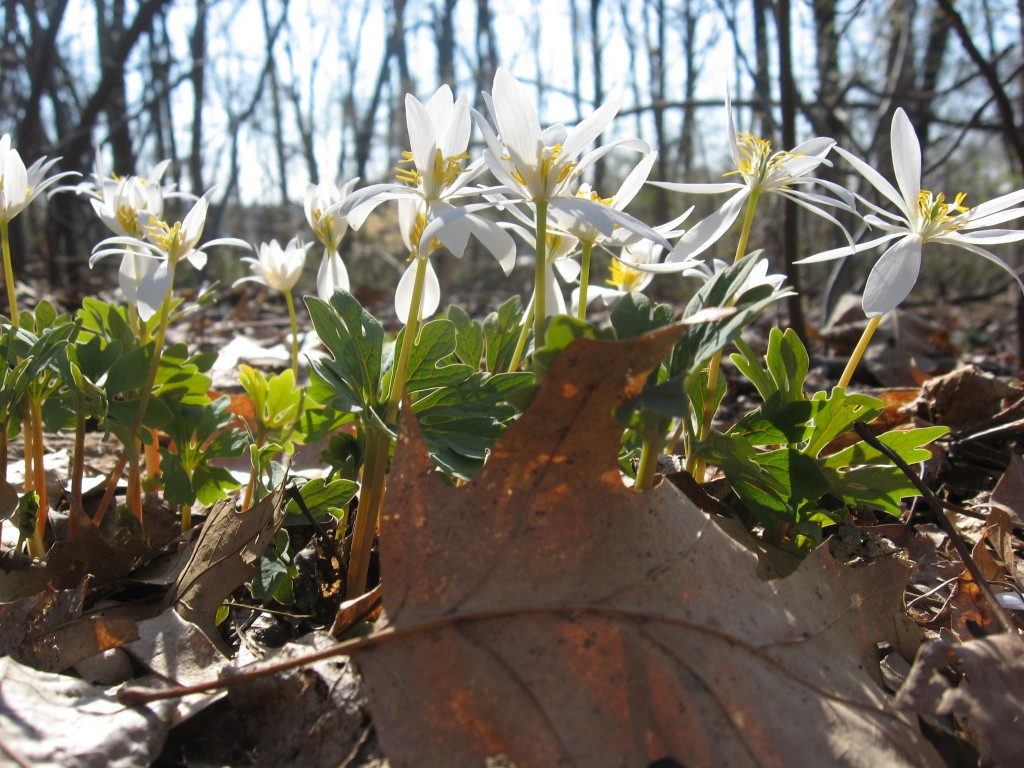
This population of Sanguinaria canadensis is at its peek bloom. Â Not ten feet away is another population, that had peaked on Monday, and as of this writing on Thursday night, April 7th, has reached its peak and is ready to start seed production. Â However, there are still a few flowers within this population that are at peak bloom. Â These two naturally occurring populations of bloodroot are very different and yet are located very close to each other. Â One reaches peak bloom one week earlier than the other. Â They have different leaf structures: The population pictured above has deeply incised lobes, whereas the population pictured below has less incised, more rounded lobes. This species is noted for the variability of its populations, that there is a great variety within general populations of a given area. This variability makes the blooming season of Bloodroot in Morris Park very interesting. Â There are groupings of flowers that bloom very early and ones that bloom much later. Â The flowers themselves have a high degree of variability in the numbers of petals: Some have two concentric circles of petals, reaching numbers into the teens and some have only 8 or 9 petals at the most.
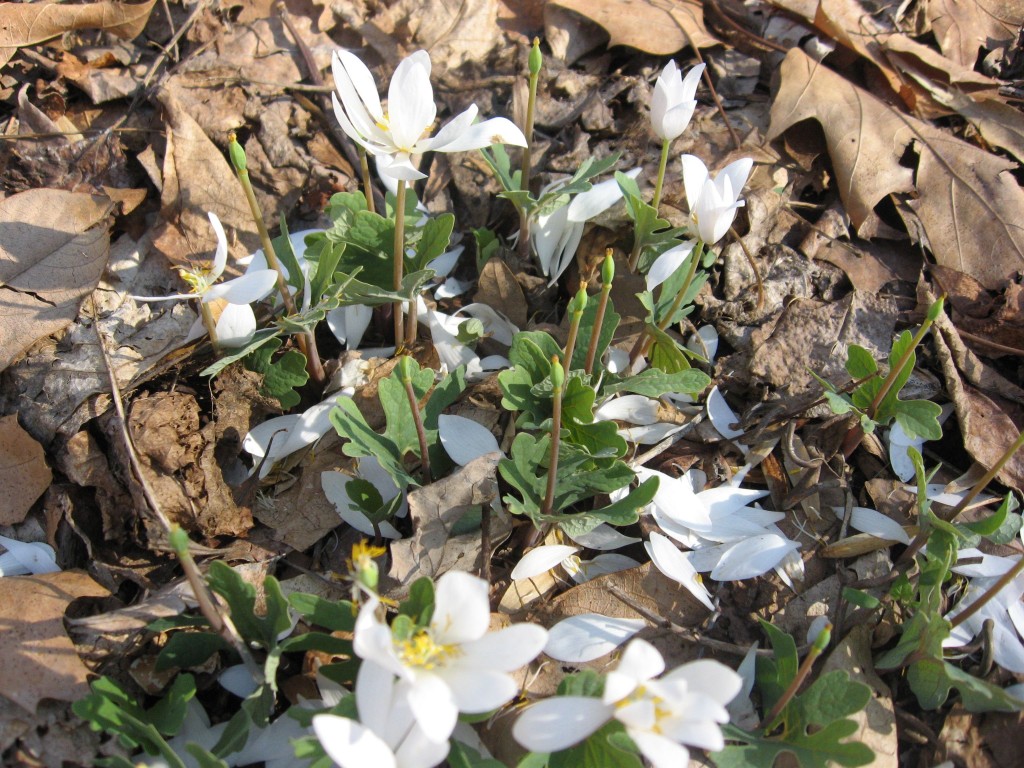
Above, a grouping of Bloodroot (Sanguinaria canadensis) in its waning bloom period. The petals, sepals, and the male portion of the flower, the stamens, fall off and land on the leaf litter below. Â The female portion, the ovary, remains, and will grow in the next few weeks into a seed pod, which will mature and break open, dropping shiny brown 2mm long seeds. Â Ants will become attracted to a fleshy mane called an eliasome, that covers the seed. They will come and drag the seed away, and eat the eliasome, and then discard the seed in a dumping area. Â This ant dump, as it turns out , is nutrient rich, well-drained, and couldnt be a better spot for seed germination. Â This symbiotic relationship with the ant is how Bloodroot expands its range and is able to survive as a species.
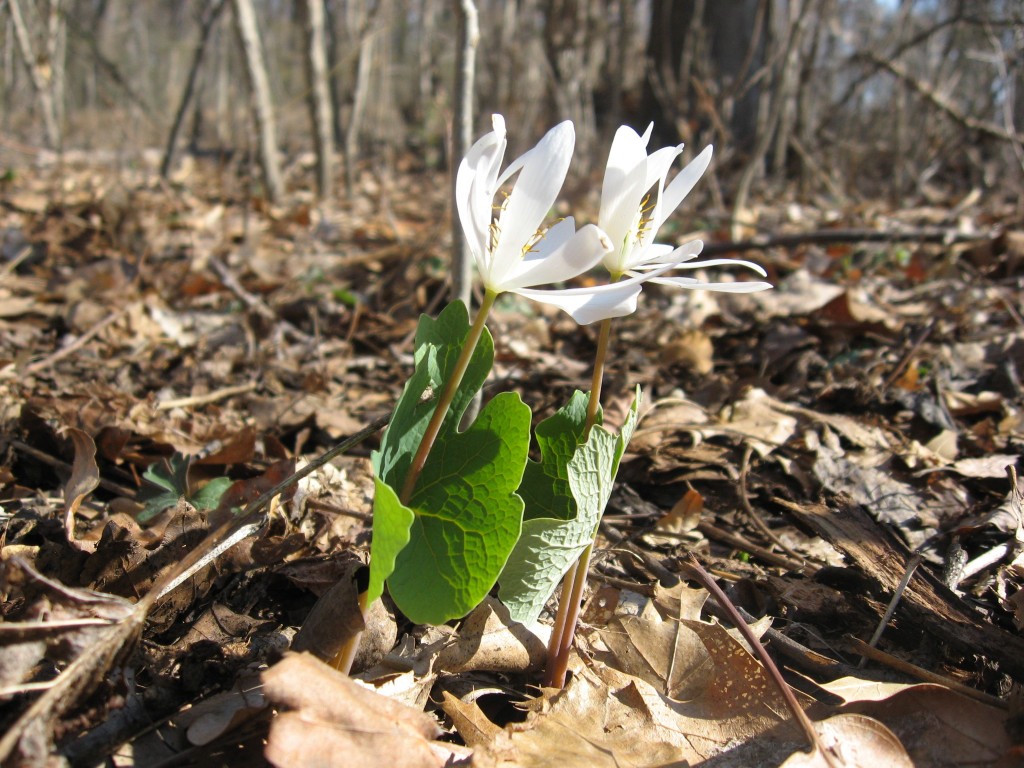
Where these two flowers bloom today was just three years ago an area infested with invasive vegetation such as Garlic Mustard, Japanese honeysuckle and Asiatic bittersweet. Since the removal of these problematic introductions, the native wildflowers and trees have been  growing at a healthy clip.  The original forest of Morris Park is surviving the onslaught of invasive introductions, with much help from volunteers in our community.
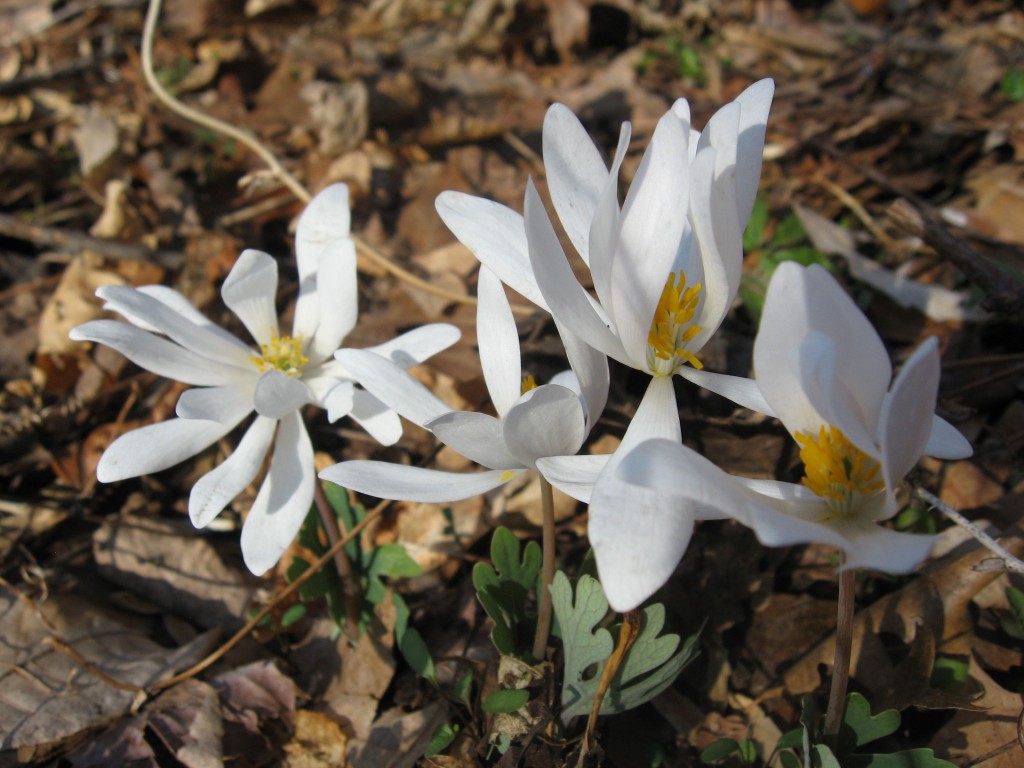
This specific population of flowers has been measured at 5.5 centimeters of flower diameter. However, for the purposes of this photograph and of the moment, there is no measurement that can do justice to the beauty of these flowers. They are blooming in the late morning after a period of heavy rains and wind, in various stages of bloom maturity. Â A sunny day ahead winks at the possibility of good pollination for these flowers.
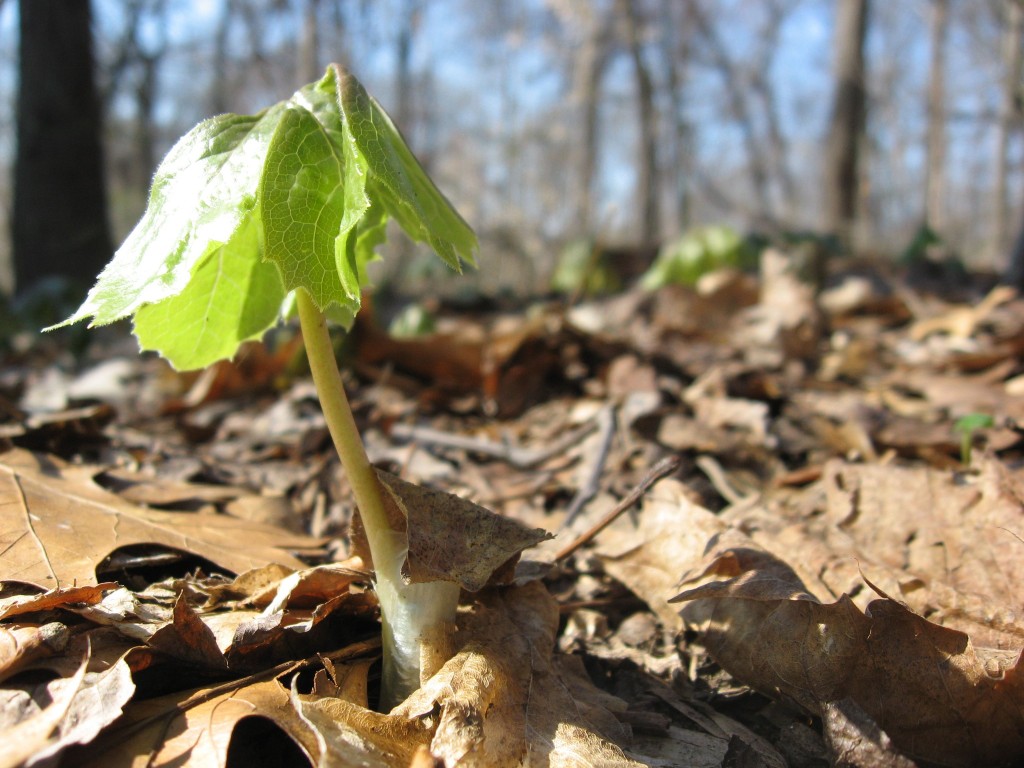
The Mayapples (Podophyllum peltatum) in Morris Park are just now emerging out of the earth. Â They have waited all winter for just this moment.
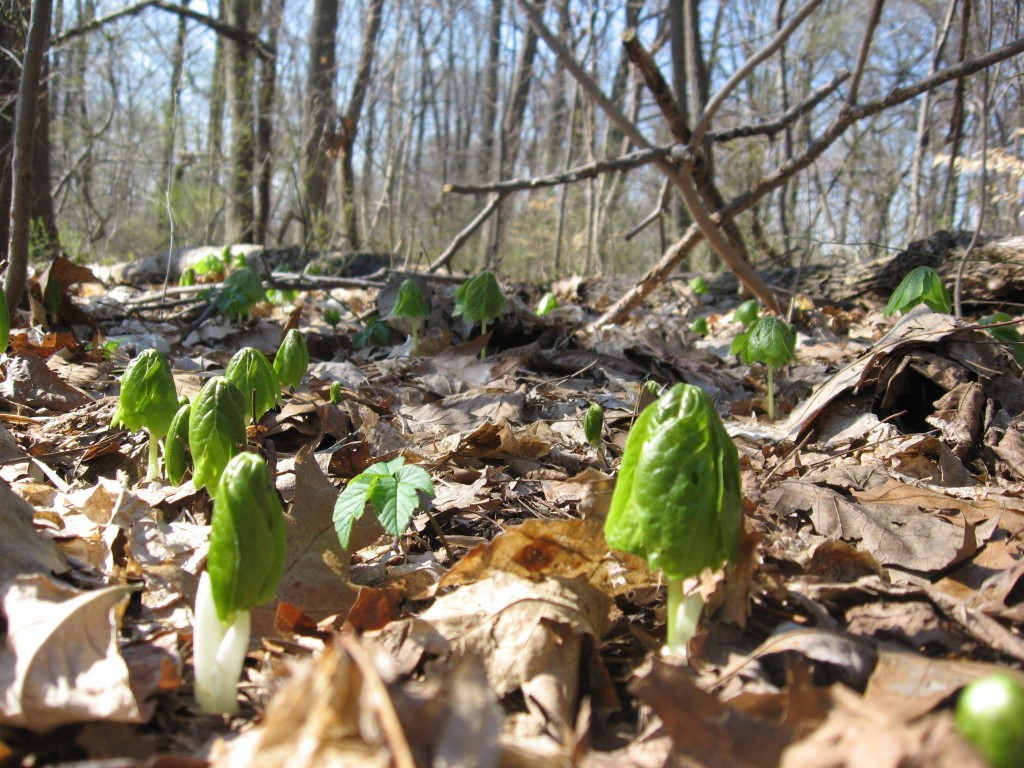
Right here, at the end of Morris Park Road, is a happy day for the Mayapples. Â The time has come to re-emerge and grow, flower and go to seed, creating a fruit that is beneficial to our native box-turtle, which we have spotted in this very Mayapple patch.
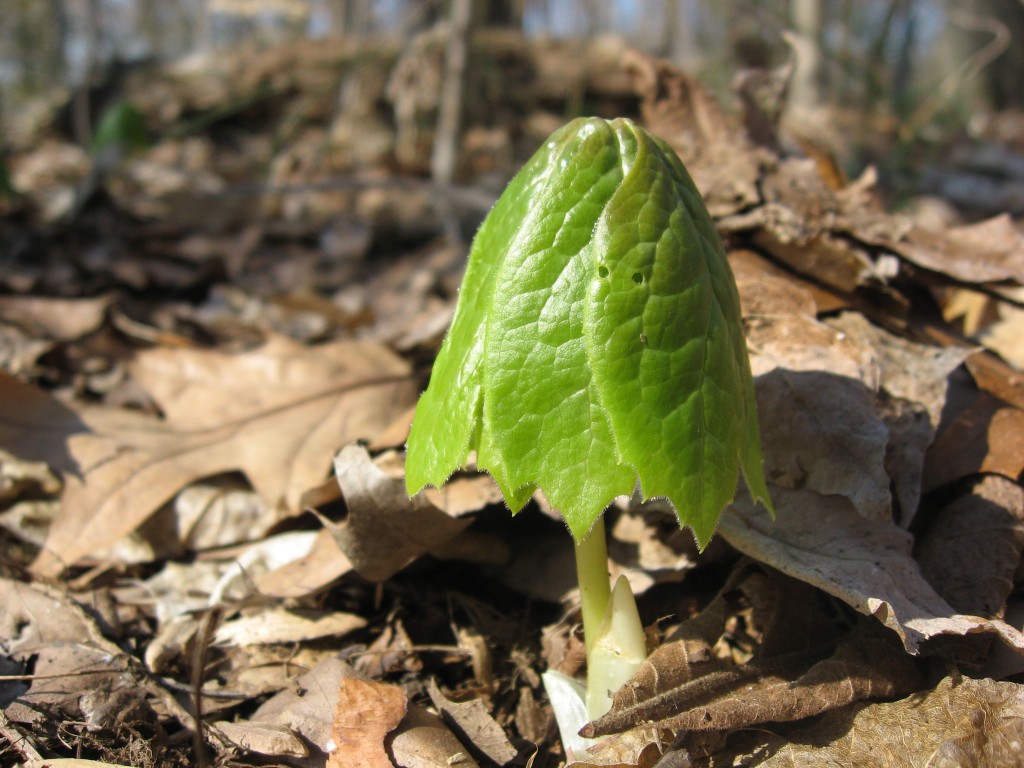
This little umbrella-like plant is spring itself. A season of turtles, fireflies, birdsongs, flowers, Owls, Hummingbirds, Crickets, all that we love about the season is now officially ahead of us. Please contribute anything we have left out in our comments section.
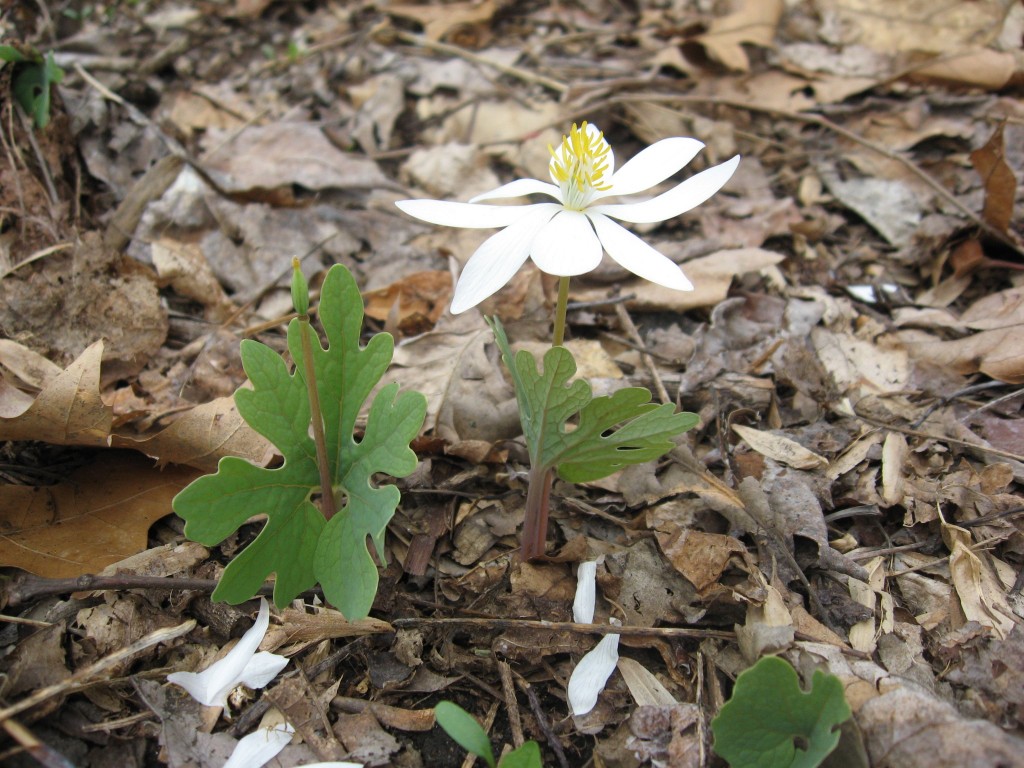
Bloodroot has a lot of variation (picture above) : To the left, the specimen has lost all of its petals and is ready to go into the seed production phase. Â To the right, a flower at its peak bloom. These flowers are most likely connected at the root.
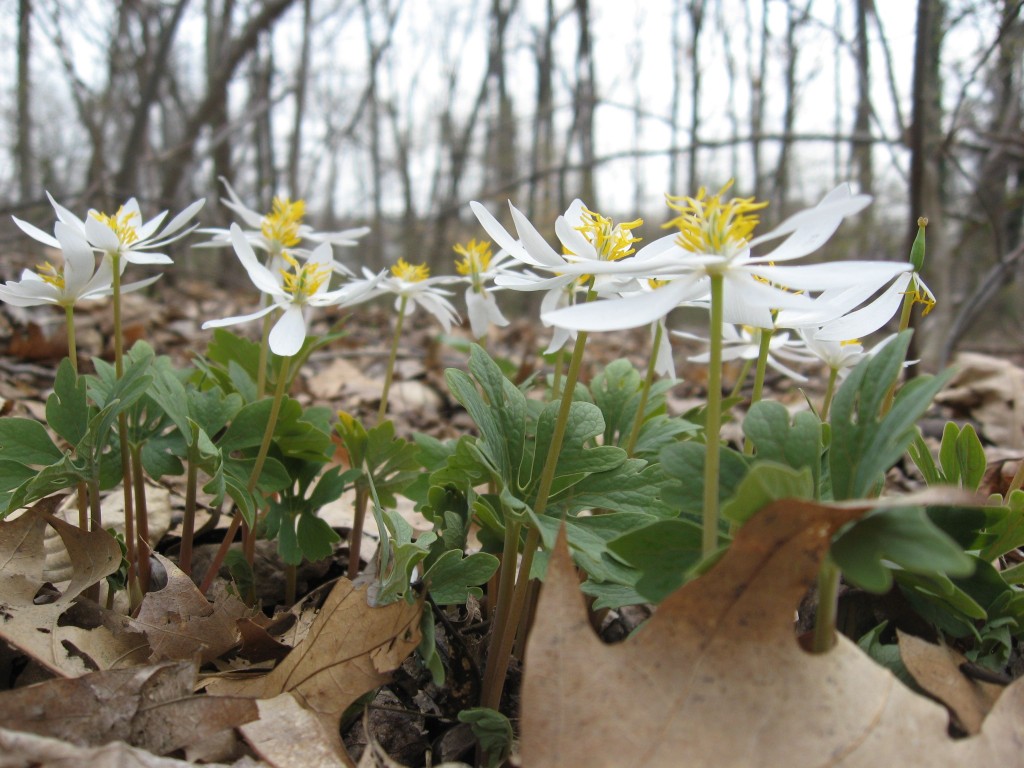
This is a population at the very end of its peak bloom, yet still entirely in bloom.
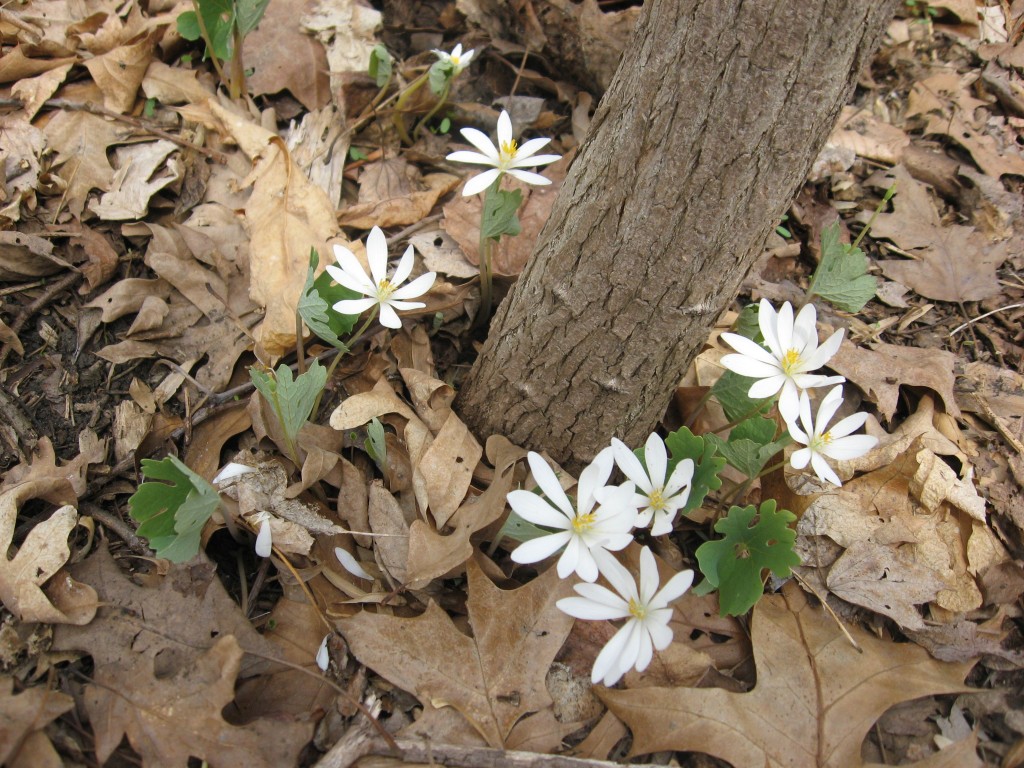
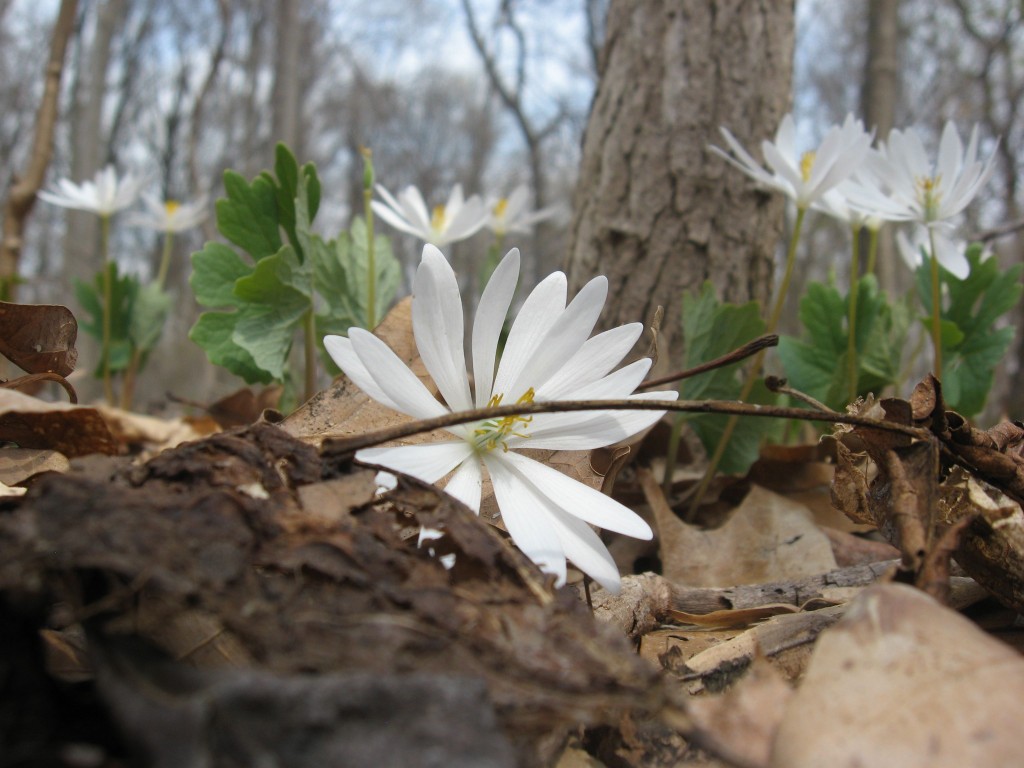
Here is a group  of Sanguinaria canadensis with the camera resting on the leaf litter. While this image can be imagined, it is the camera that becomes the eye for us viewers.  To witness this same image  from our own eyes would require an effort that would exceed our level of comfort. We would have to bend down into the forest floor and rest our head on the leaf litter.  We would be putting our selves at risk of ticks and poison ivy. We would also be in danger of crushing many emerging wildflowers.  This is where the camera is a great convenience by seeing for us what we cannot reasonably see for ourselves, and the above picture is a prime example. This picture was taken while standing on a log next to the the trail, and leaning the camera down as far as possible into the leaf litter, next to a stand of blooming Bloodroot. The most care was taken to not disturb anything in order to obtain this picture. It is very easy to accidentally crush a flower while trying to observe a flower. With the utmost humility, we at the Sanguine Root have experienced this.  Now we do everything we can can to have the most minimal impact on anyplace we go. The flower  pictured above waited all winter to bloom.
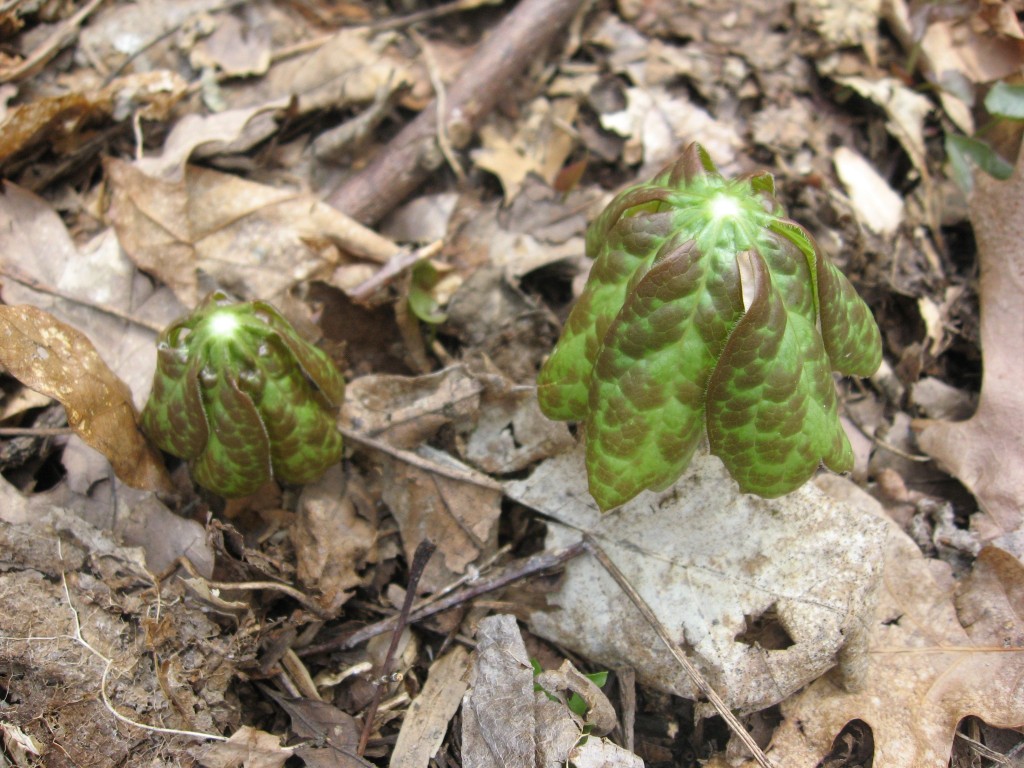
Its really happening! Spring 2011 has finally brought Mayapples out of the soil in Morris Park! Â If you can find the time , get out and enjoy the flowers in your area.



Don’t forget the “peepers”. The frogs chirping is our entry into Spring. Plus we have bluebirds, orioles, and birds we never saw before.
Your first photo, image 1578, is really nice! The criss-crossed shadows on the bloodroot petals as well as the sun’s halo on the leaves makes it a superior view of Morris Park flowers. Wish I was there to look at it in person. Keep it up, Sean. They’re nice to look at!